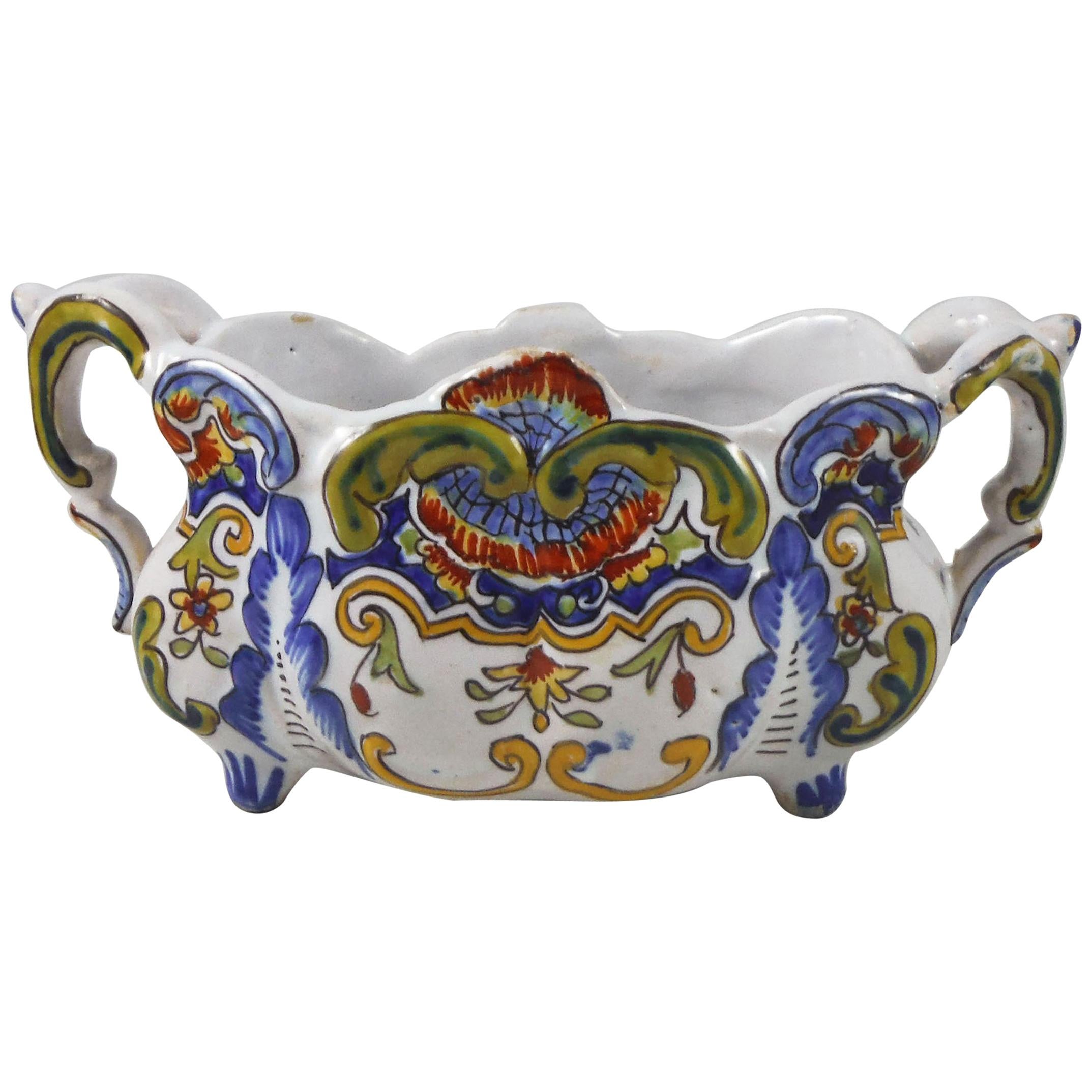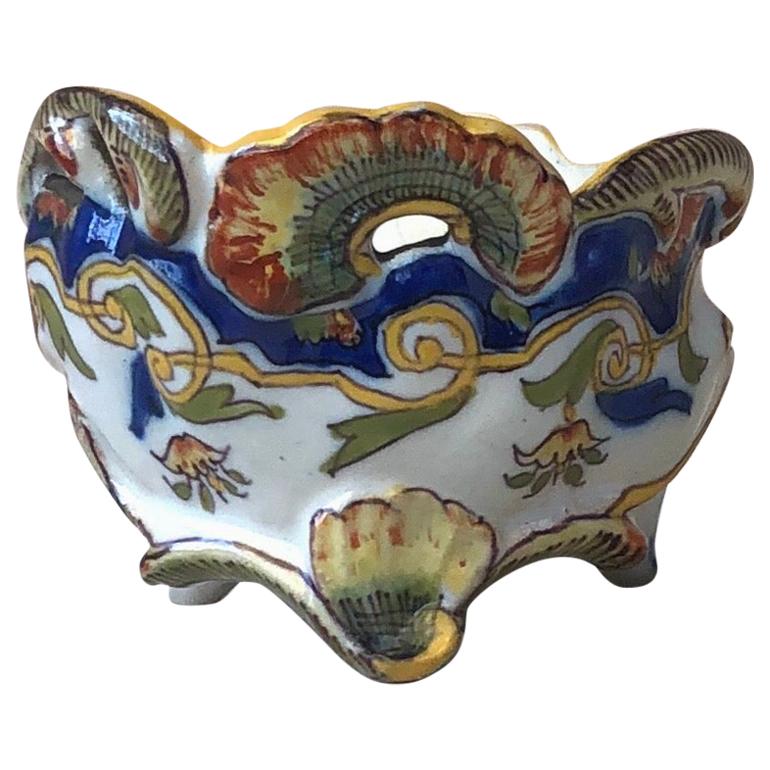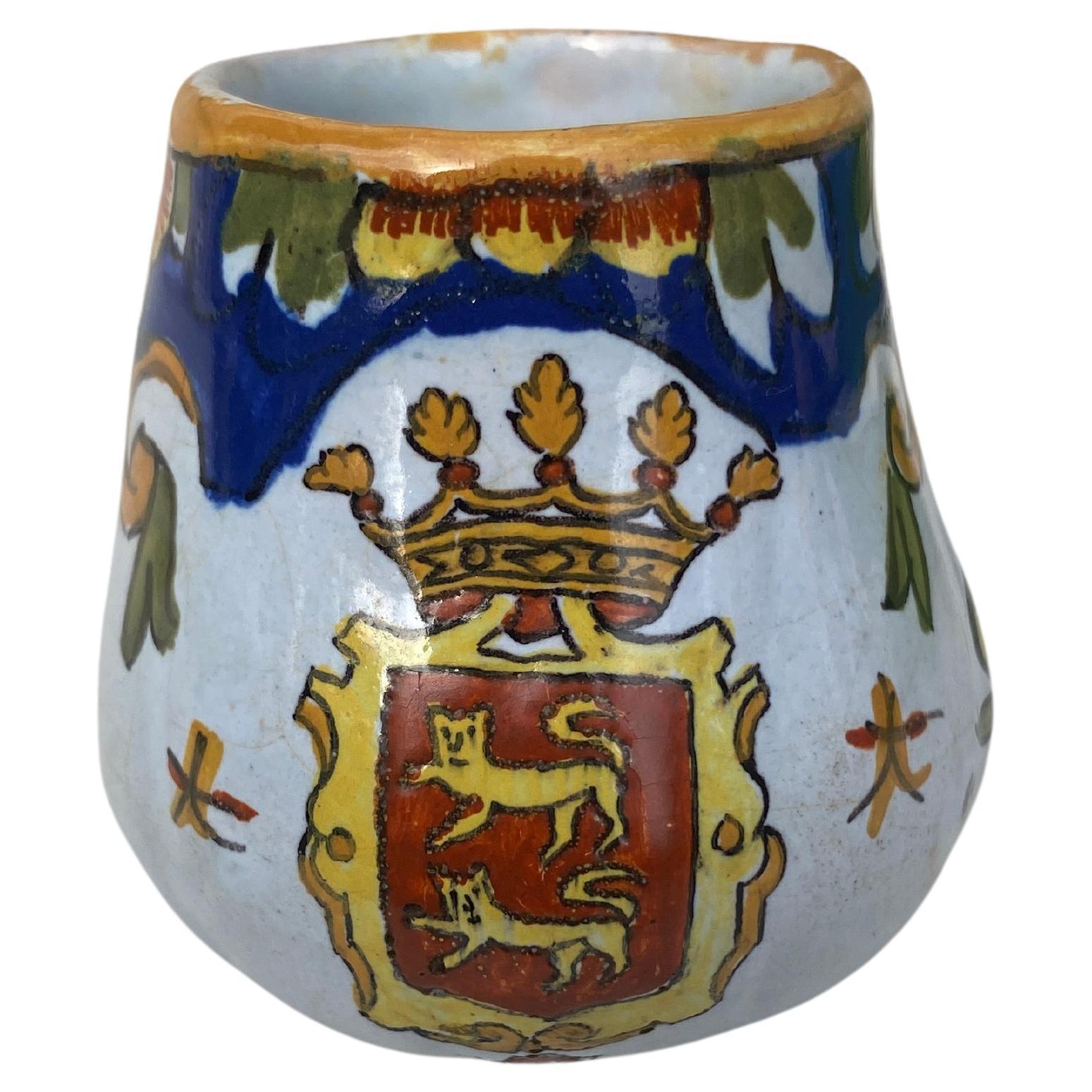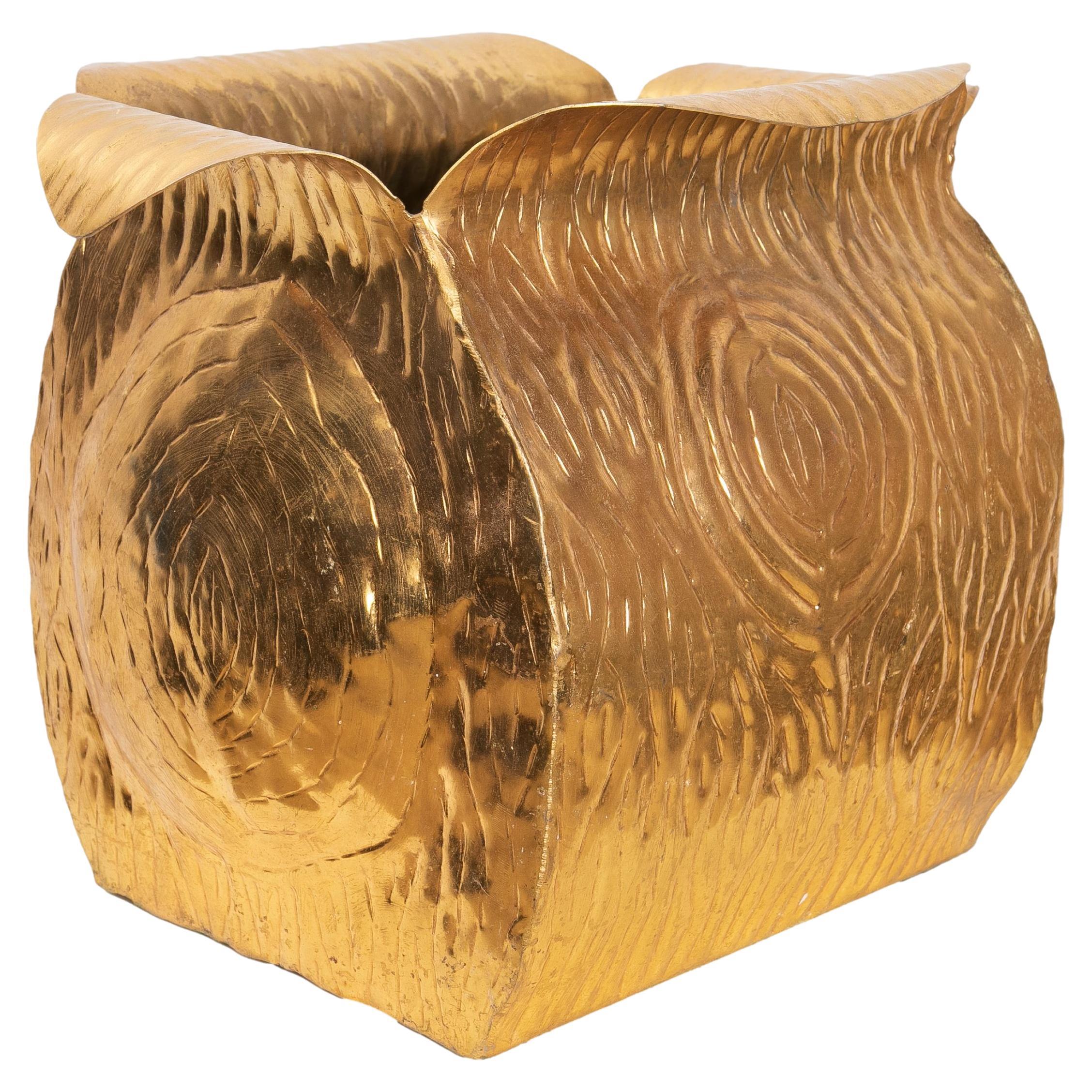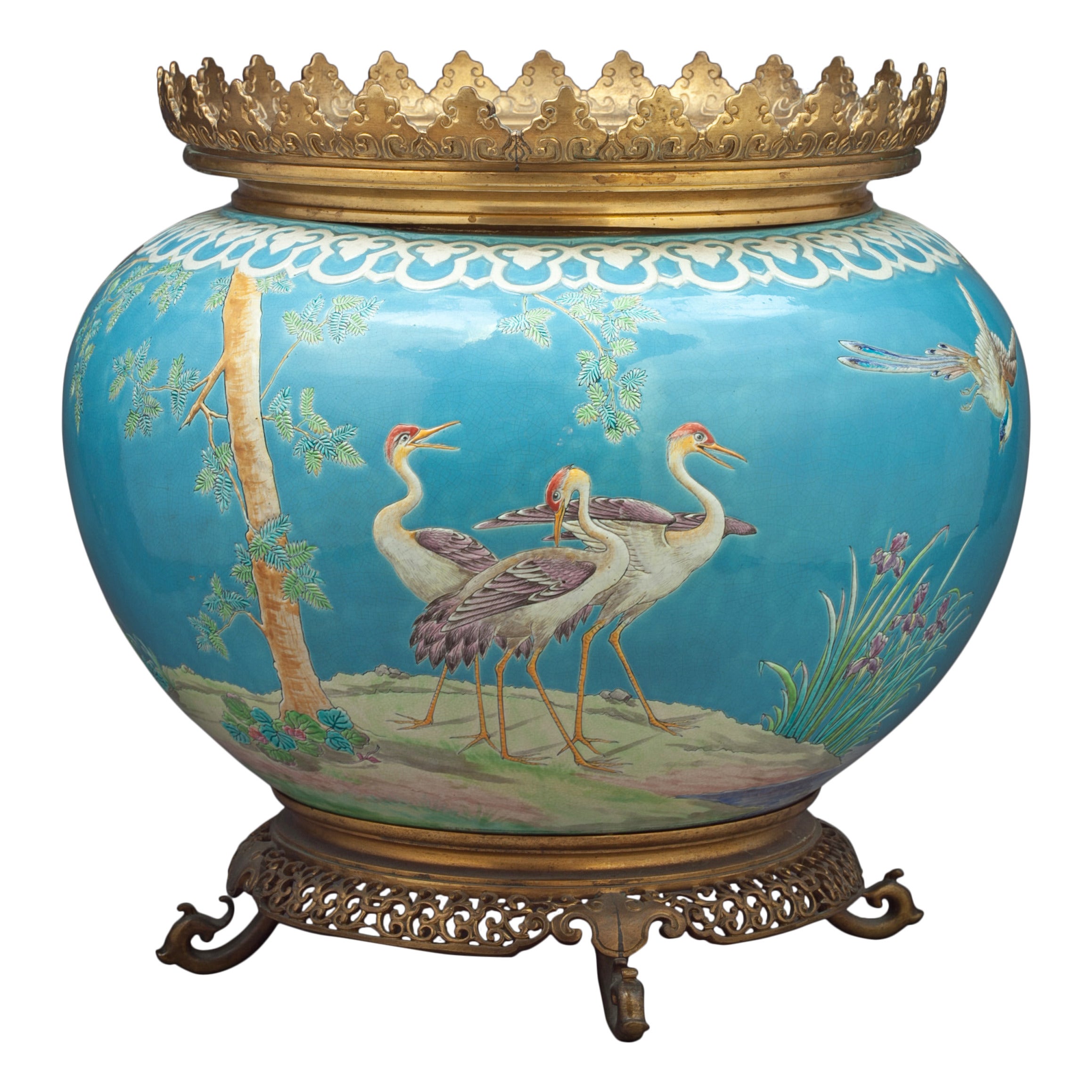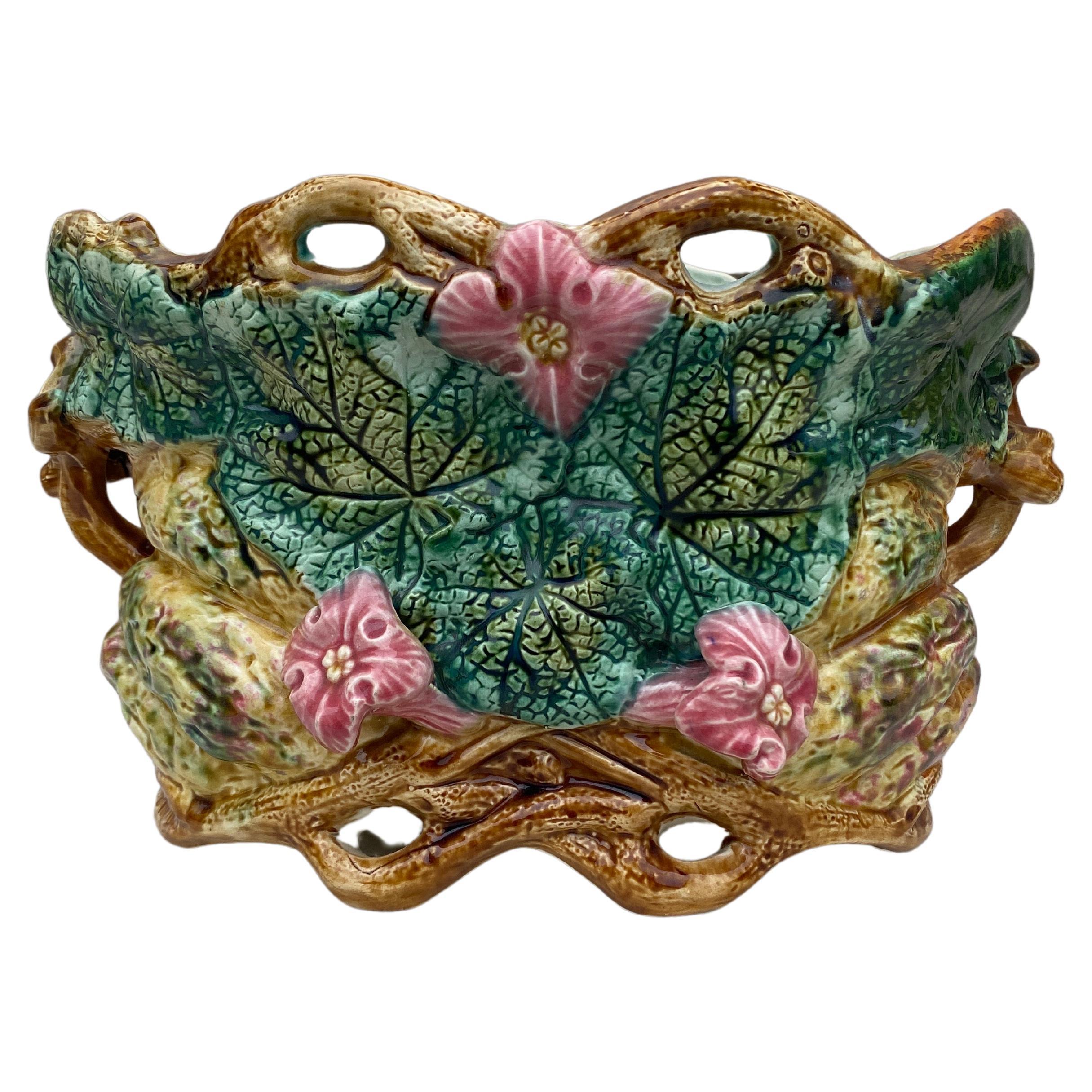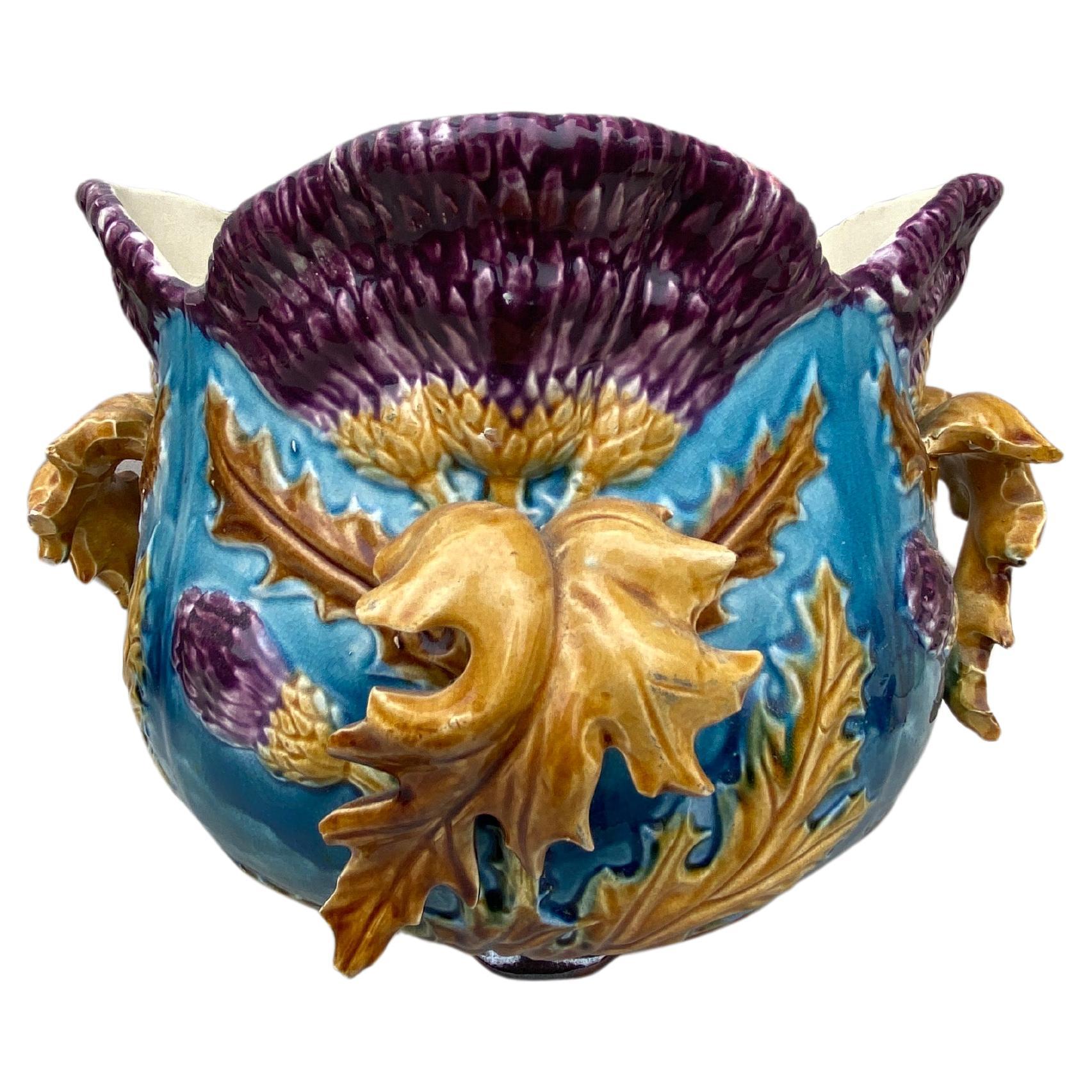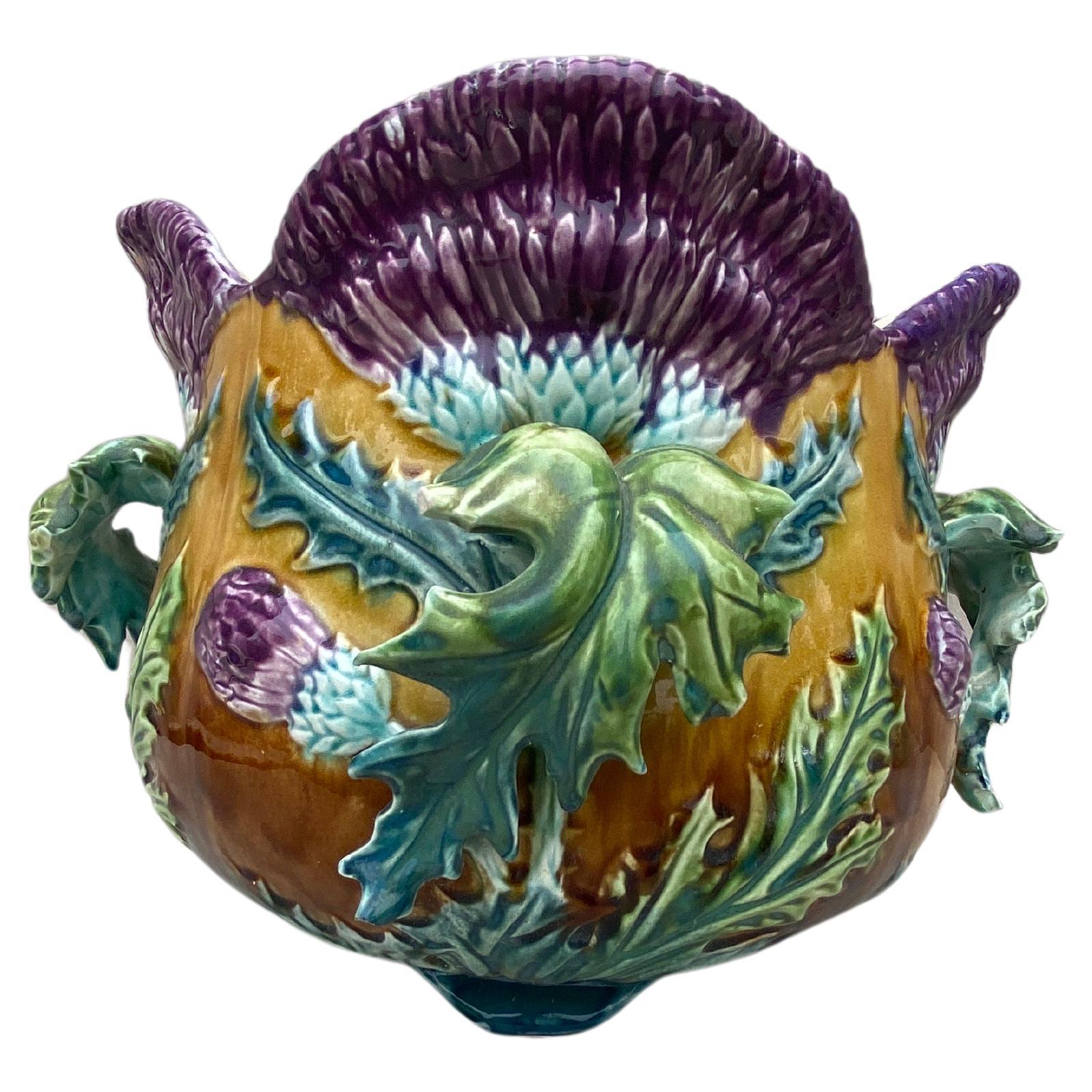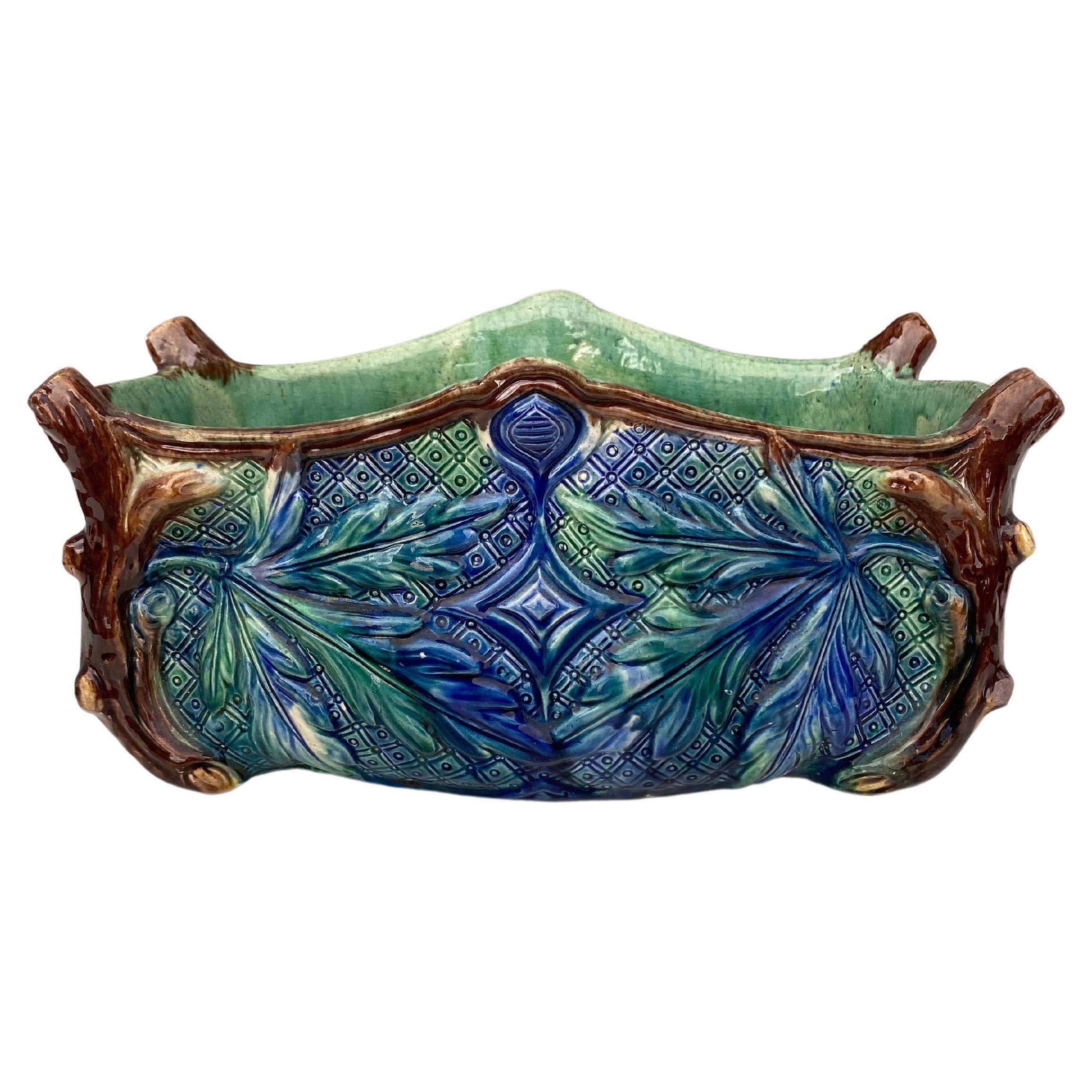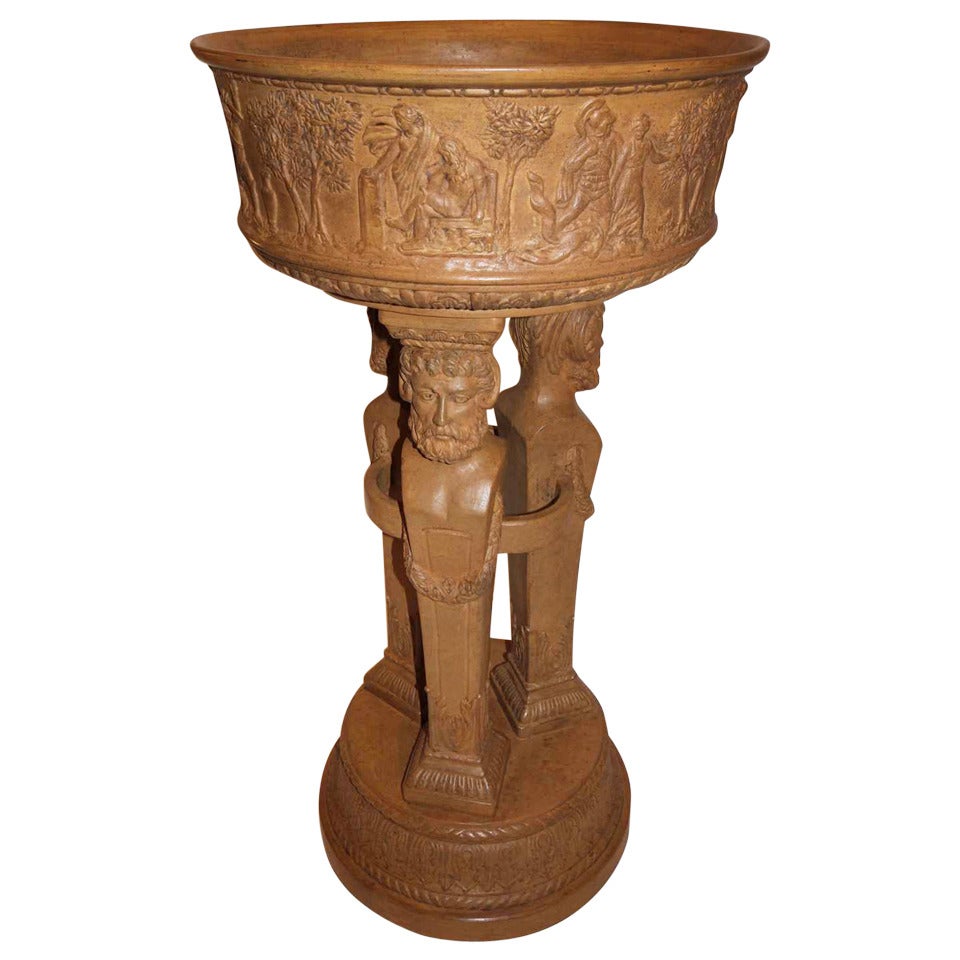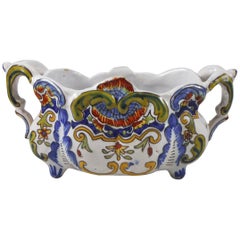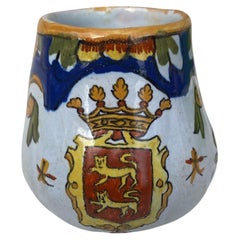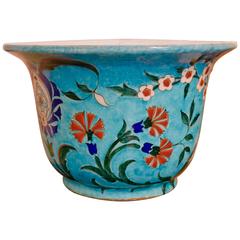
Théodore Deck Iznik Style Decoration Faience Flowerpot, circa 1880
View Similar Items
Want more images or videos?
Request additional images or videos from the seller
1 of 11
Théodore Deck Iznik Style Decoration Faience Flowerpot, circa 1880
About the Item
- Creator:Theodore Deck (Maker)
- Dimensions:Height: 13 in (33 cm)Diameter: 8.27 in (21 cm)
- Style:Islamic (In the Style Of)
- Materials and Techniques:Faience,Enameled
- Place of Origin:
- Period:
- Date of Manufacture:circa 1880
- Condition:Wear consistent with age and use.
- Seller Location:Saint-Ouen, FR
- Reference Number:1stDibs: LU261237856093
About the Seller
4.9
Vetted Seller
These experienced sellers undergo a comprehensive evaluation by our team of in-house experts.
1stDibs seller since 2017
56 sales on 1stDibs
Typical response time: 1 hour
More From This SellerView All
- A Théodore Deck (1823-1891) Enamelled Faience Soliflore Vase circa 1875By Theodore DeckLocated in Saint-Ouen, FRThéodore DECK (1823-1891) A polychromatic enamelled earthenware soliflore and quadrangular shape vase with Sino-Japanese inspiration design of flowers and geometrical friezes all around. Impressed uppercase mark "TH.DECK" under the base. Circa 1875 Born in Guebwiller in Alsace, Théodore Deck trained as a ceramist in his home region, then in Germany. He went into partnership with his brother, Xavier Deck, to create his own factory in Paris in 1858. At the Exhibition of Industrial Arts in 1864, he presented pieces covered with transparent enamels that were not cracked, and then made his first attempts at reliefs under transparent enamels. He developed a bright turquoise color, famously renowned as "Bleu Deck". It is this nuance that we find on the salamander represented on this vase. In 1887 he published a treatise entitled "La Faïence", in which he explained some of his discoveries. That same year, he became director of the Manufacture de Sèvres. Theodore Deck (1823-1891) is a French ceramist born in Guebwiller in Alsace. He is passionate about chemistry and the physical sciences. In 1841, he joined the master stove maker Hügelin father as an apprentice in Strasbourg. In two years, he learned of the methods inherited from the 16th century, such as the encrustation of colored pastes in the style of Saint-Porchaire. This apprenticeship did not prevent him from spending his free time draw-ing or modeling clay in the studio of sculptor André Friederich. Escaping military service, he made a tour of Germany as is the tradition with fellow Alsatian stove-makers. The quality of his work allows him to obtain important orders in Austria for the castles of the provinces and the imperial palaces, in particular for the palace of Schönbrunn. He continues his journey in Hungary to Pest, to Prague, then, going north through Dresden, Leipzig, Berlin and Hamburg. On the strength of his apprenticeship, he arrived in Paris in 1847. Recommended by Hügelin, he went to the stove factory of the Bavarian potter Vogt, located rue de la Roquette. The Revolution of 1848 interrupts production and Deck decides to return to his hometown. His family then advised him to set up a small terracotta workshop: he made a few busts, statuettes, vases, lamps and copies of famous antiques there. Aware that this situation would not allow him to provide for himself properly, he returned to Paris in 1851 where he was employed by the widow Dumas, daughter of the earthenware maker Vogt for whom he had worked. Hired as a foreman, he supplied the drawings and models to the workers, while working the land himself. The following year, he made the decision to settle not far from his former employer at 20, rue de la Fontaine-au-Roi, probably using his ovens. His brother, Xavier Deck, joins him. It was officially in 1858 that the Deck brothers created their business and settled in Paris at 46, boulevard Saint-Jacques. Initially, the brothers only carry out coatings for stoves. But the business is going so well that barely a year after their installation, they want to diversify their production and engage in ceramics for the cladding of buildings as well as in shaped parts. Deck is interested in politics. In 1870, he opted for French nationality and was elect-ed deputy mayor in the 15th arrondissement of Paris. In 1861, at the Salon des arts et industries de Paris, which was held on the Champs-Élysées, Théodore Deck exhibited his works for the first time: these were pieces with an inlay decoration called “Henri II” and others. pieces covered with turquoise blue enamel or decoration in the style of Iznik ceramics.If he wins a silver medal, reviews are mixed, however. The following year, on the occasion of the Universal Exhibition of 1862 in London, he won over English customers. He surprised by presenting, like the previous year, his Alhambra Vase...Category
Antique 1870s French Japonisme Vases
MaterialsFaience
$4,739 Sale Price30% Off - Pair of Théodore Deck Enamelled Faience Iznik Vases Ormolu-Mounted in LampsBy Gagneau Paris, Theodore DeckLocated in Saint-Ouen, FRThéodore Deck (1823-1891) Pair of Enamelled Faience Vases Ormolu-Mounted in Lamps Bodies treated in the Iznik style with blue enamelled decoration on a white background of Kufic writ...Category
Antique 1870s French Islamic Table Lamps
MaterialsOrmolu
$4,968 Sale Price / set30% Off - Theodore Deck '1823-1891', a Japonisme Polychromed Faience Quadrangular VaseBy Theodore DeckLocated in Saint-Ouen, FRTheodore Deck (1823-1891) A Polychromed Faience quadrangular vase, decorated in a cartouche with butterfly and birds on branches of prunus and peonies in the Japanese Taste on a pu...Category
Antique Late 19th Century French Japonisme Vases
MaterialsFaience
- Théodore Deck (1823-1891) Faience Paneled Fourteen-Tile Rectangular Wall PlaquBy Theodore DeckLocated in Saint-Ouen, FRA Théodore Deck (1823-1891) Faience Paneled Fourteen-Tile Rectangular Wall Plaque Polychromic Earthenware very finely hand-painted, designed with a couple of pheasants among vegetat...Category
Antique 1870s French Japonisme Decorative Art
MaterialsFaience, Wood
- Pair of Théodore Deck Celadon Enamelled Faience Vases Ormolu-Mounted in LampsBy Gagneau Paris, Theodore DeckLocated in Saint-Ouen, FRTheodore Deck ( 1823-1891). A pair of gilt-bronze mounted theodore deck faience celadon-ground vases, mounted as lamps. Each decorated in the Chinese taste, with flower-head medallions within foliate scrollwork. Very fine Ormolu mounts quality and original gilding in great condition, the pierced bases with beast-mask monopodia feet. Impressed THD Monogram mark The oil-lamp Fitments Signed Gagneau Circa 1875 With Its original glass globes (chips and crack) and tubes fitted for electricity 12 ½ in. (31.8 cm.) high, the ceramic vases only Theodore Deck (1823-1891) is a French ceramist born in Guebwiller in Alsace. He is passionate about chemistry and the physical sciences. In 1841, he joined the master stove maker Hügelin father as an apprentice in Strasbourg. In two years, he learned of the methods inherited from the 16th century, such as the encrustation of colored pastes in the style of Saint-Porchaire. This apprenticeship did not prevent him from spending his free time drawing or modeling clay in the studio of sculptor André Friederich. Escaping military service, he made a tour of Germany as is the tradition with fellow Alsatian stove-makers. The quality of his work allows him to obtain important orders in Austria for the castles of the provinces and the imperial palaces, in particular for the palace of Schönbrunn. He continues his journey in Hungary to Pest, to Prague, then, going north through Dresden, Leipzig, Berlin and Hamburg. On the strength of his apprenticeship, he arrived in Paris in 1847. Recommended by Hügelin, he went to the stove factory of the Bavarian potter Vogt, located rue de la Roquette. The Revolution of 1848 interrupts production and Deck decides to return to his hometown. His family then advised him to set up a small terracotta workshop: he made a few busts, statuettes, vases, lamps and copies of famous antiques there. Aware that this situation would not allow him to provide for himself properly, he returned to Paris in 1851 where he was employed by the widow Dumas, daughter of the earthenware maker Vogt for whom he had worked. Hired as a foreman, he supplied the drawings and models to the workers, while working the land himself. The following year, he made the decision to settle not far from his former employer at 20, rue de la Fontaine-au-Roi, probably using his ovens. His brother, Xavier Deck, joins him. It was officially in 1858 that the Deck brothers created their business and settled in Paris at 46, boulevard Saint-Jacques. Initially, the brothers only carry out coatings for stoves. But the business is going so well that barely a year after their installation, they want to diversify their production and engage in ceramics for the cladding of buildings as well as in shaped parts. Deck is interested in politics. In 1870, he opted for French nationality and was elected deputy mayor in the 15th arrondissement of Paris. In 1861, at the Salon des arts et industries de Paris, which was held on the Champs-Élysées, Théodore Deck exhibited his works for the first time: these were pieces with an inlay decoration called “Henri II” and others. pieces covered with turquoise blue enamel or decoration in the style of Iznik ceramics.If he wins a silver medal, reviews are mixed, however. The following year, on the occasion of the Universal Exhibition of 1862 in London, he won over English customers. He surprised by presenting, like the previous year, his Alhambra Vase...Category
Antique 1870s French Chinoiserie Table Lamps
MaterialsOrmolu
$9,172 Sale Price / set40% Off - Daum Art Deco Acid-Etched "Campanulas" Glass Vase, circa 1930By DaumLocated in Saint-Ouen, FRDaum Nancy France Acid-Etched Glass “Campanulas” Vase circa 1930 Vase with flared body and circular heel in blue glass with acid-etched hollow decoration of geometric campanulas on a white background Signed "Daum Nancy France" Circa 1930 Bibliography: Tiny Esveld, "Daum Art Deco Glass...Category
Vintage 1920s French Art Deco Glass
MaterialsArt Glass
You May Also Like
- French Faience Jardiniere Desvres, circa 1900By DesvresLocated in Austin, TXFrench Desvres faience jardinière painted with flowers, circa 1900. Marked on base. Minor wear.Category
Antique Early 1900s French French Provincial Planters, Cachepots and Jar...
MaterialsFaience
- Small French Faience Jardinière Desvres, circa 1900By DesvresLocated in Austin, TXSmall French faience jardinière with floral pattern Desvres, circa 1900.Category
Antique Early 1900s French French Provincial Planters, Cachepots and Jar...
MaterialsCeramic, Faience
- Petite French Faience Vase Desvres, circa 1900By DesvresLocated in Austin, TXSmall French faience jardinière with floral pattern Desvres, circa 1900.Category
Antique Early 1900s French French Provincial Planters, Cachepots and Jar...
MaterialsCeramic, Faience
- 1980s Italian Handmade Brass FlowerpotLocated in Marbella, ES1980s Italian Handmade Brass Flowerpot.Category
Late 20th Century Italian Planters and Jardinieres
MaterialsBrass
- French Faience Jardinière Cache Pot Desvres, circa 1900By DesvresLocated in Austin, TXFrench Desvres faience jardinière cachepot painted with flowers, coat of arms and a farmer, circa 1900.Category
Antique Early 1900s French French Provincial Planters, Cachepots and Jar...
MaterialsCeramic, Faience
- 1990s Orientalist Glazed Ceramic Flowerpot StandLocated in Marbella, ES1990s Orientalist Glazed Ceramic Flowerpot Stand.Category
Late 20th Century Asian Planters, Cachepots and Jardinières
MaterialsCeramic
